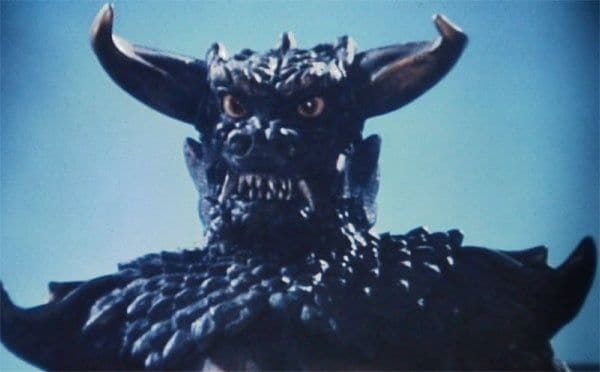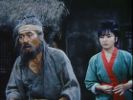Eye For Film >> Movies >> Pulgasari (1985) Film Review
Pulgasari
Reviewed by: Jennie Kermode

What would you do if you loved monster movies and wanted your own country to make ones as exciting as Japan's? Would you plaster your bedroom with posters and site there dreaming? Would you set out to become a filmmaker yourself? If you were Kim Jong Il, you might take it a step further, kidnapping your favourite director (previously known for arty dramas) and, by threatening the beautiful actress he loved, force him to make the films you wanted to see.
Unfortunately, having a great director at your beck and call doesn't mean automatically having great actors or a great script. The camerawork and sound here are impressive given the poor equipment the crew were working with, but other aspects of the film really flounder. Of course, the tremendous pressure on everyone involved can't have helped. The script walks a tightrope, showing rebellion against authority but very carefully placing it all in the context of a corrupt feudal society, and reminding us at intervals that the common people possess a natural heroism and purity which means they could never do such things.

One of those people is an elderly man (Gwon Ri) who, after being arrested for helping rebels, chooses to starve to death rather than submit to his captors. His final act is to take the rice his daughter has given him and mold it into a tiny figurine. When his daughter Ami (Chang Son Hui), who has inherited this figurine, accidentally spills a drop of her blood onto it, it comes to life and starts munching on her sewing needles. This is Pulgasari, manifestation of a spirit the old man believed in, and its tremendous appetite for iron sees it grow rapidly. As it is devoted to Ami, it soon starts fighting the soldiers who threaten her village, and the rebels realise that with it marching in their ranks, they will be unstoppable. Naturally the bad guys refuse to take this lying down, and they come up with a number of elaborate schemes to try and defeat it.
Lumbering around in a big rubber suit, Pulgasari has much of the charm of Godzilla and is the natural romantic lead, despite the script's pointed focus on handsome rebel leader Inde (Ham Gi Sop). It actually looks a bit better than some of its Japanese counterparts for the simple reason that it's based upon traditional carvings of demons which are always seen in rather stiff poses. Exactly how it fights is a little unclear - it stomps, of course, and there's a satisfying citadel-smashing scene near the end - but its flailing arms and apparent inability to bend down leave its options rather limited. Nevertheless, its sheer size makes it a convincingly scary adversary, even if it varies in both directions from scene to scene and clever perspective shots are badly let down by some awful green screening.
Those with an interest in North Korean culture will find many points of interest here. The abundance of brightly coloured costumes and banners, especially in the royal court, would have been striking to its initial audience at a time when all they had were identical blue clothes made from celebrated shiny nylon, and they indicate that no expense has been spared here. The obsession with food, which emerges in many different ways, is a bleak auger of the famine that would afflict the country a decade later, killing a tenth of its inhabitants. The romantic melodrama and tragic ending are a hallmark of a country where sentimentality in cinema is held in high regard and Titanic (in smuggled DVD form) is now the best selling film.
Pulgasari is uneven and, in places, very slow. It's unlikely to appeal to general audiences, but it's a must for serious monster movie fans. It's also a fascinating indication of how the hermit kingdom saw itself at a pivotal point in its history.
Reviewed on: 29 Dec 2014














